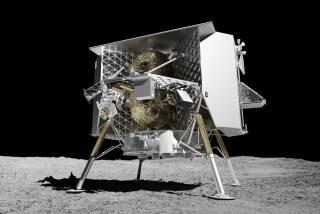Funding Lack Kills Workhorse Space Satellite
- Share via
WASHINGTON — It was only meant to be in space for three years, but the International Ultraviolet Explorer lasted nearly 19, producing brilliant scientific observations before dying ignominiously Monday of money starvation.
With the push of a button, Dr. Yoji Kondo at the Goddard Space Flight Center in Maryland ended one of the longest and most productive missions in the history of space science.
That caused the hydrazine gas tank, which held steering propellant, to empty and the batteries to go dead.
“The satellite is out of control and is spinning now,” Kondo said.
IUE never got the publicity of the Hubble Space Telescope, but it did its work 24 hours a day for all those years, hovering 26,000 miles above Earth, seeking ultraviolet measurements on all sorts of heavenly objects. Although it recorded invisible light, computers changed the data into stunning photographs.
Ground-based telescopes cannot see ultraviolet radiation because most of it is filtered out by Earth’s atmosphere.
“The decision to shut down a hardy veteran like IUE was not an easy one,” said Dr. Wesley Huntress, associate administrator for Space Science at NASA headquarters. The money is needed to operate “an increasing number of productive space science missions.”






